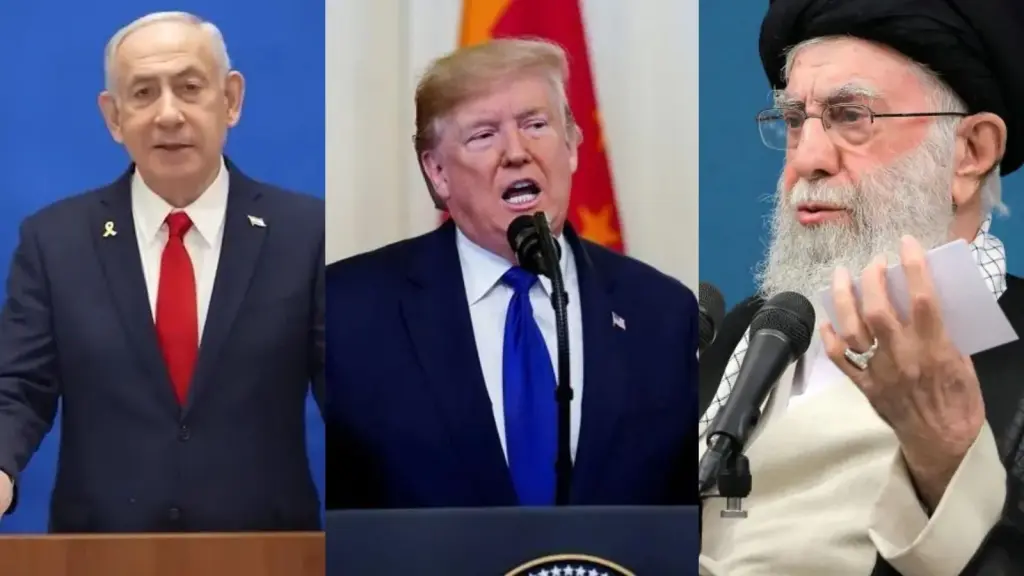US President says lull in fighting is expected to begin in a few hours and that the war will officially end after the completion of "final missions".
In a post made on Monday (23) on his social network, Truth Social, US President Donald Trump announced that Israel and Iran have reached an agreement for a complete ceasefire. The truce is expected to begin in the next few hours, officially ending the direct confrontation between the two countries, which has been going on for 12 days.
“It has been fully agreed between Israel and Iran that there will be a complete and total ceasefire (approximately 6 hours from now, when Israel and Iran complete their final ongoing missions!), for 12 hours, at which time the war will be considered over!” Trump wrote on the network.
🌍 Conflict escalated after bombings and nuclear threats
The announcement comes just two days after the United States attacked three strategic nuclear facilities in Iran, located in Fordo, Natanz and Isfahan. The US offensive has reignited tension in the Middle East and prompted Iran to retaliate with attacks on military bases in Qatar.
The rhetoric of Ayatollah Ali Khamenei, Iran's supreme leader, has also fueled the warlike climate. On Sunday (22), he stated that the “Zionist enemy made a big mistake and must be punished,” in clear reference to Israel, although without mentioning it directly.
Still, Trump's announcement represents a possible turning point in the most serious conflict involving Tehran and Tel Aviv in recent years.
🕊 What is known about the ceasefire?
According to the US president's statement, the two nations will continue to carry out ongoing military operations — which he calls “final missions” — before the ceasefire comes into effect, which is expected to occur within six hours of the announcement.
The pause is expected to last 12 hours, and Trump considers it to be “the official end of the war.” However, no official confirmation has been released by Israel or the Iranian government to date.
Sources linked to international diplomacy claim that the agreement was brokered with the support of indirect channels, mainly involving global powers such as China and Russia, in addition to strong pressure exerted by the United States.
🔍 Behind-the-scenes tension and global risk
Global fears about a possible expansion of the conflict — especially after Iran threatened to close the Strait of Hormuz, vital to the flow of global oil — accelerated diplomatic efforts behind the scenes. Around 20% of global crude oil production passes through the region, which could trigger an energy crisis.
The day before, US Secretary of State Marco Rubio had publicly asked China to pressure Tehran to avoid blocking the route. In his speech, he warned that “it would be economic suicide for Iran.”
🗣️ Trump seeks to take center stage as a peacemaker
Since the beginning of the hostilities, Trump has adopted an ambivalent stance: initially promising force against Iran, but also publicly defending the “need for dialogue” and offering himself as a peace mediator.
This ceasefire announcement could be seen as a political trump card for Trump, who had already been criticized for the recent military escalation. If the agreement is confirmed, the president could present himself as the articulator of a historic truce between two of the biggest rivals in the Middle East.
📌 Next steps
The 12-hour truce is expected to begin today, if confirmed by both sides.
Political analysts warn that the “peace” could be fragile, since many of the points of tension — such as Iran’s nuclear program, Israel’s military presence in the region and each side’s strategic alliances — remain unresolved.
The UN and G20 countries are expected to make an official statement later this week on the ceasefire and possible initiatives to transform the temporary truce into a lasting agreement.
📰 Follow on DFATOS
We will continue to monitor the developments of the ceasefire between Iran and Israel and update you on the political, economic and social impacts of the end of the war. Stay tuned to our portal and social networks.
 Português
Português









